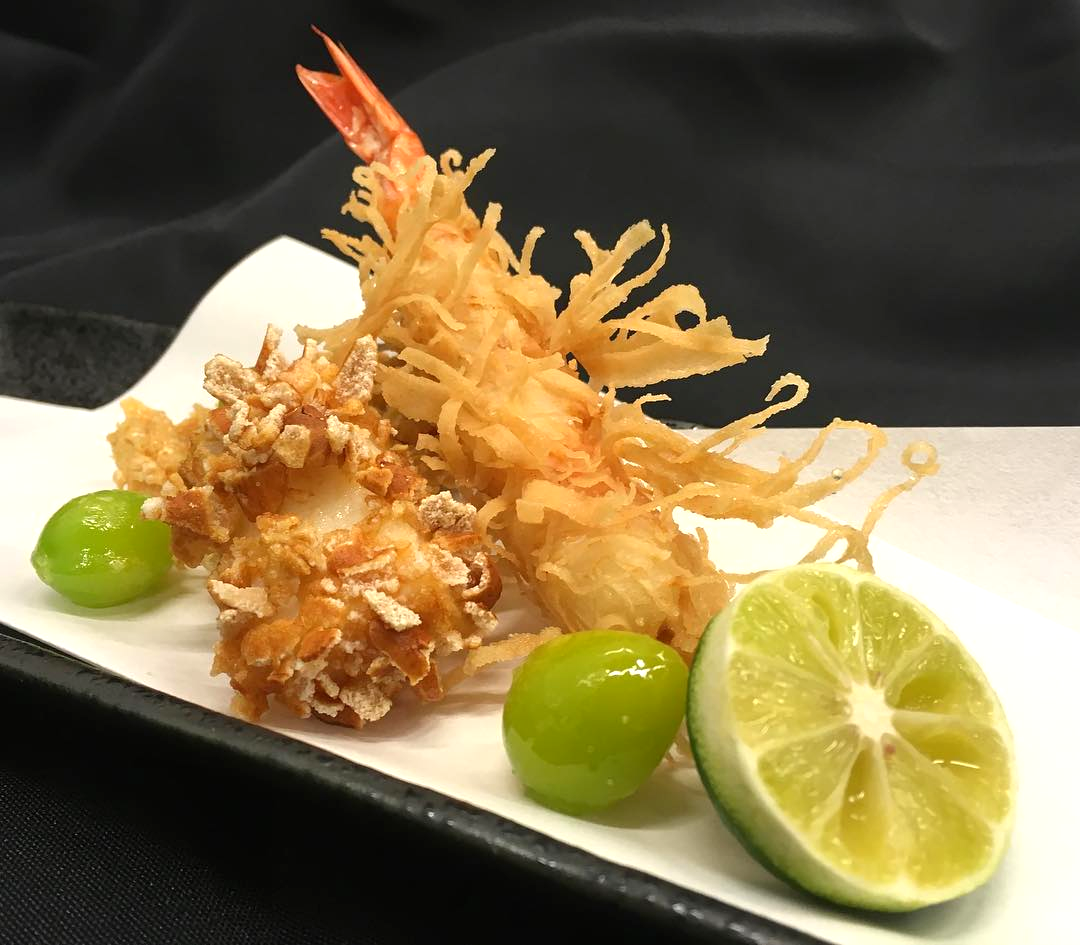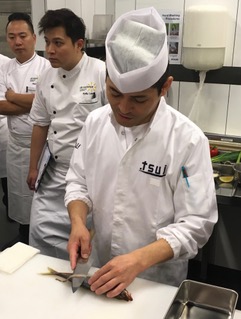Story by Vivienne Yeo, participant of WSQ Prepare Agemono in 2018
Deep-frying isn’t something I do often at home. The deliciousness is incomparable, but the work and labor always
The double-day, full-day sessions—held on Wednesday and Friday to break up the intensity of our frying lessons—opened my eyes to the joys and beauty of deep-frying, which is essentially what agemono means (“a-ge,” in Japanese, is “fry,” and “mono” means “things”).

Whoever says that deep-frying is unhealthy would do well to visit this class to appreciate that deep-frying can deliver superior taste and texture without all that grease. Hang out with Chef-Teacher Masakatsu Takemoto from Tsuji, that famous culinary institution in Japan, and you will learn some of the finer techniques of working up a good pot of oil, hot enough to sizzle your prawn or squid or lotus root, quickly and expertly, without leaving them soggy with grease.
Here, our handsome, humble, and soft-spoken teacher shares with us two secrets to a great pot of oil—165ºC for vegetables, and 175ºC for seafood—and how to determine these temperatures without the help of any thermometer. That’s right, no thermometer! All you need is some training of the eye by simply flinging tempura batter into the hot oil and observing how the bubbles of batter behave.
There’s a zen and calm to all of Takemoto-Sensei’s actions from the way he lines up his cooking utensils, to the way he lays out his ingredients, and of course, his knife maneuvers. Even his assistant, Suzuki-san, has an impeccable neatness in the way he does his mise en place for the entire class. And so, the two days weren’t just lessons in the high art of deep-frying.
What came through was the quiet beauty of Japanese customer service—a stickler’s obsession and attention to care and detail.
Suzuki-san, upon hearing my gentle, almost sheepish complaint that my knife was dangerously unsharp, came to my station with his own. “Just return it to me when you’re done,” he whispered discreetly.
And here, while working at my first attempt at filleting a fish, a shima-aji, I felt as if everything in the universe had conspired to help me succeed. Al Naif, one of two or three At-Sunrice’s students assigned to hover over and help us tempura newbs and agemono amateurs, came to my rescue.
Just when I thought I would have butchered my poor fish, his advice saved the day: “Just keep the knife close to the bone.” His words gave me a first-ever feat, too, of peeling my radish in the style of a sushi-chef—with the knife edge working the girth of the radish in one confident peel. “Keep the knife at angle” was all he had to say.


L: Takemoto-Sensei de-scaling the tail-end of a shima-aji
R: Tweezing out the pin bones (Photo: Vivienne Yeo)
It’s nice to feel like a pretend sushi chef, having some smidgeon of knife mastery over a fish and a radish. It’s equally nice, too, to feel like some pretend tempura chef who got the batter almost right, the oil temperature almost right, and the fish-out time of my fried things almost right—all while averting any frying disasters.
The joy of tempura is not just the mastery over batter and oil. There’s so much more: how to cook great rice, how to make an irresistible dashi, and who would have known too, that Sensei would leave us with a little aesthetic and spirit of origami!
The last intake for the WSQ Prepare Agemono class in At-Sunrice GlobalChef Academy is 24 & 25 October and 26 & 27 October 2018. Sign up at this link today!
A related story was also published on Sucker For Butter at this link: Why Is My Tempura Not Crispy?

This site uses Akismet to reduce spam. Learn how your comment data is processed.